April 2025
Welcome to Space Station Spotlight, a monthly newsletter from the ISS National Laboratory®. Here’s where you can find all the latest R&D happenings on the space station, see what our partners are up to, and learn how to elevate your research to new heights by leveraging the unique space environment.
What’s new at the ISS National Lab?
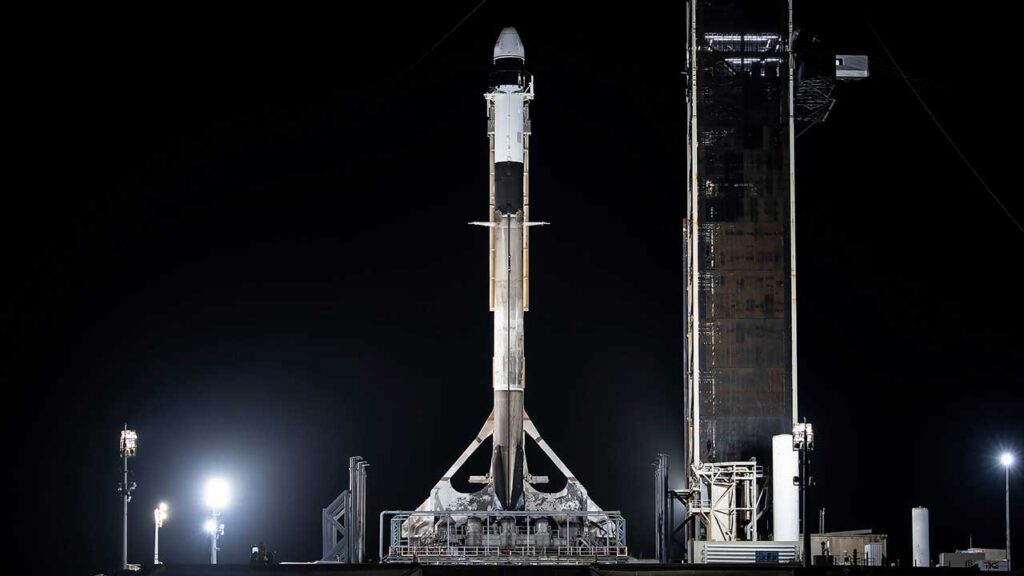
These include biomedical research, physical sciences projects, and technology demonstrations. Learn more on our launch page.

The microscope will use innovative holographic technology to provide detailed 3D views of cells and microbes, allowing scientists to study the adaptability and resilience of life under extreme conditions. Read more about this amazing technology.
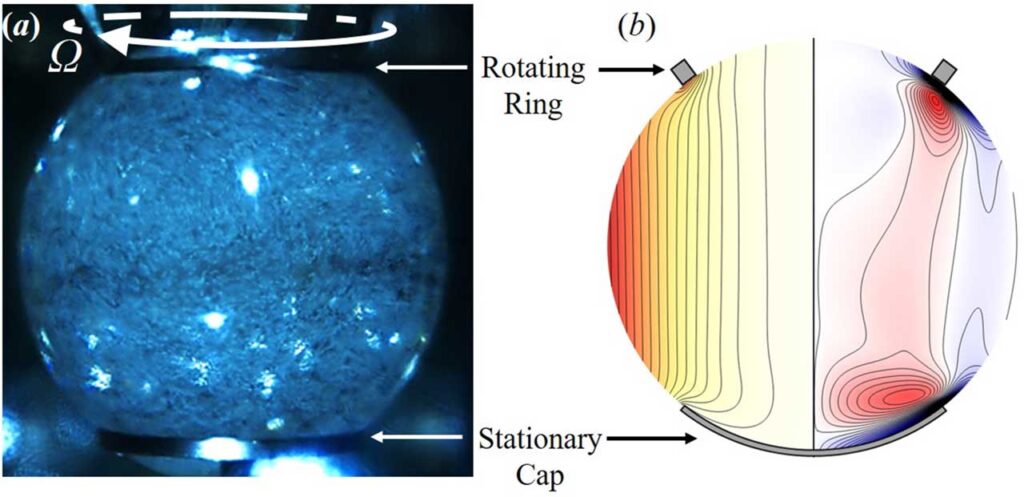
These experiments aim to advance fundamental science that could lead to improved pharmaceutical manufacturing, new materials with valuable industrial applications, and the next generation of soft active materials with lifelike properties. Learn more about these experiments.
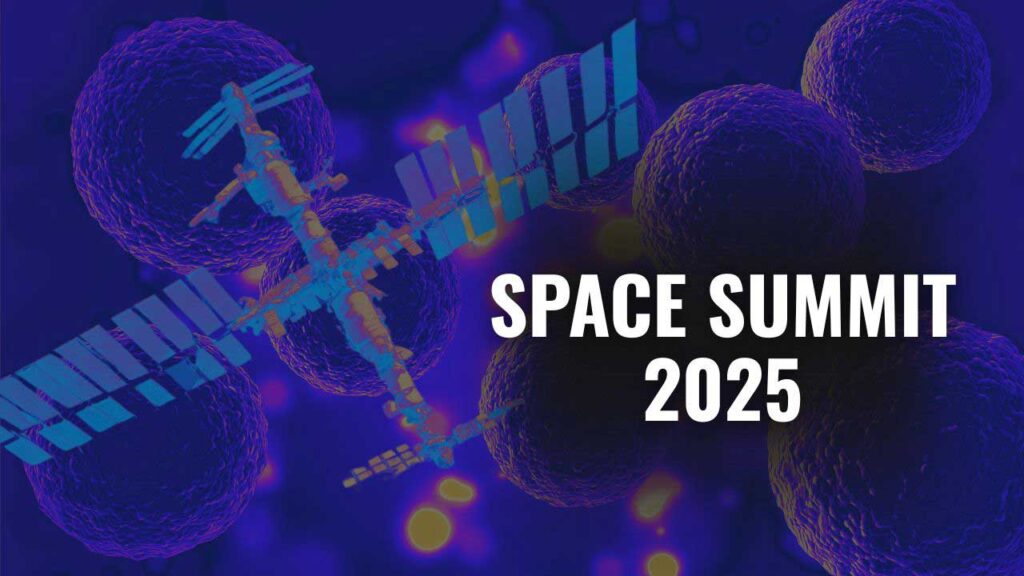
Roberts, ISS National Lab chief scientific officer, and Kristin Kopperud, science program director for the ISS National Lab, will provide welcome remarks and co-host several events, including a roundtable discussion on how to fly your research on the ISS. Read more regarding the 2025 Space Summit.
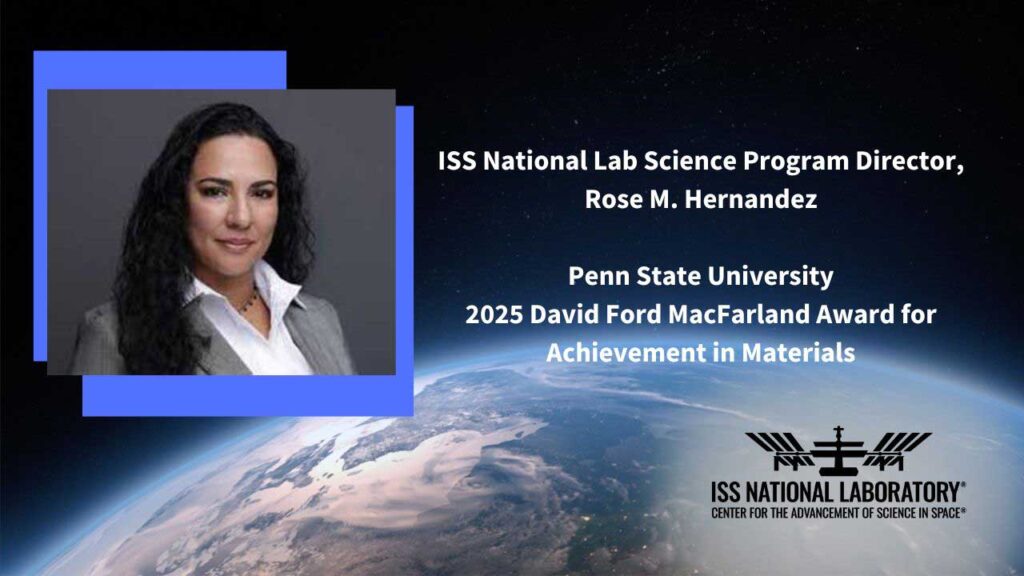
Hernandez was awarded the 2025 David Ford MacFarland Award for Achievement in Materials by the Penn State Department of Materials Science and Engineering. The award honors Penn State graduates who have honorably distinguished themselves in a materials science field. Read more about Rose and the award.
More than 3.5 million images of Earth have been taken from the space station, capturing the beauty of city lights, cloud patterns, volcanoes, and more. Scientists use these images to study our planet’s oceans, atmosphere, and natural disasters. View the awe-inspiring photos.
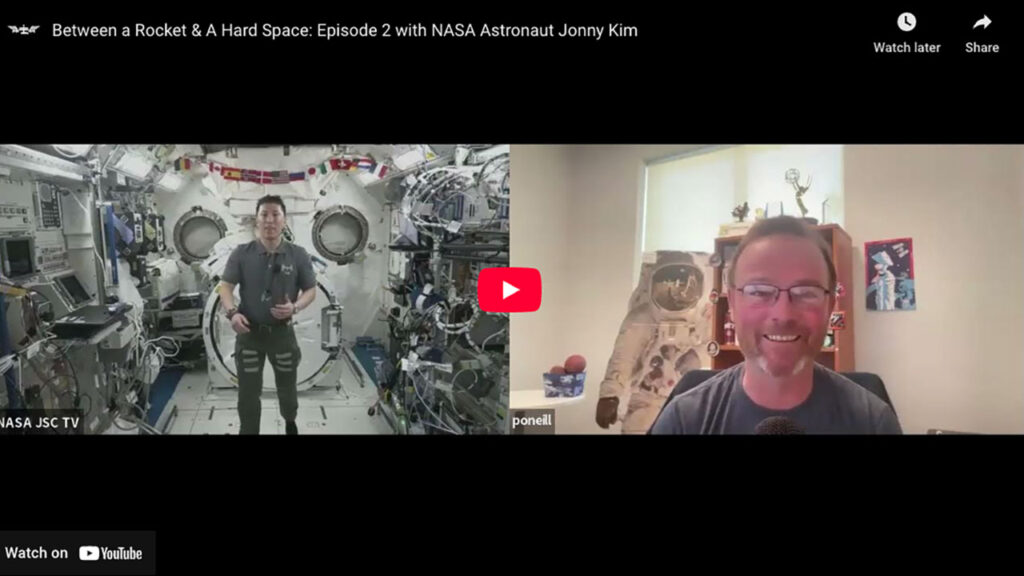
In this latest issue of Between a Rocket and a Hard Space, host Patrick O’Neill talks with NASANational Aeronautics and Space Administration astronaut Jonny Kim from onboard the space station. Kim, who arrived at the ISS just days before the podcast, shares his thoughts about living and working in space. Tune in on your favorite podcast platform or watch the video.
Partner News
Vast unveiled a model of its Haven-1 space station at the 2025 Space Symposium. Haven-1 is currently slated for launch in May 2026. The company also announced its recent agreement with CASIS(Abbreviation: CASIS™) The nonprofit organization that manages the ISS National Lab, which receives at least 50 percent of the U.S. research allocation on the International Space Station to facilitate research that benefits humanity (NASA manages the other 50% and focuses on research for space exploration purposes)., designating Vast as an ISS National Lab Commercial Service ProviderImplementation Partners that own and operate commercial facilities for the support of research on the ISS or are developing future facilities..
Voyager Technologies plans to acquire LEOcloud, a space-based cloud computing startup. LEOcloud is preparing to install and test its Space Edge micro datacenter on the space station as part of an ISS National Lab-sponsored investigation.
Redwire Corporation added a new leadership role to head up global expansion. Redwire appointed Mike Gold as president of civil and international space business. The company recently grew its presence in Europe, opening a new office in Warsaw, Poland.
Honda is partnering with Sierra Space and Tec-Masters to test a renewable energy system on the ISS.The project supports Honda’s broader goal of supporting sustainable human life on the Moon. The energy system is designed to use solar energy and water to provide continuous power and breathable oxygen in space.
The Texas Space Commission awarded more than $26 million to five space companies. The awards come from a $150 million appropriation made by the Texas Legislature to stimulate the state’s space industry. This most recent round of awards included a $10 million award to Aegis Aerospace.
Axiom plans to launch its first two Orbital Data Center (ODC) nodes later this year. The ODC nodes will significantly increase processing power on space-based platforms. Once the network is fully built, it will allow data to be analyzed in orbit without requiring downlink to Earth. Axiom also announced its chief revenue officer, Tejpaul Bhatia, will be the company’s new CEO.
Funding Opportunities
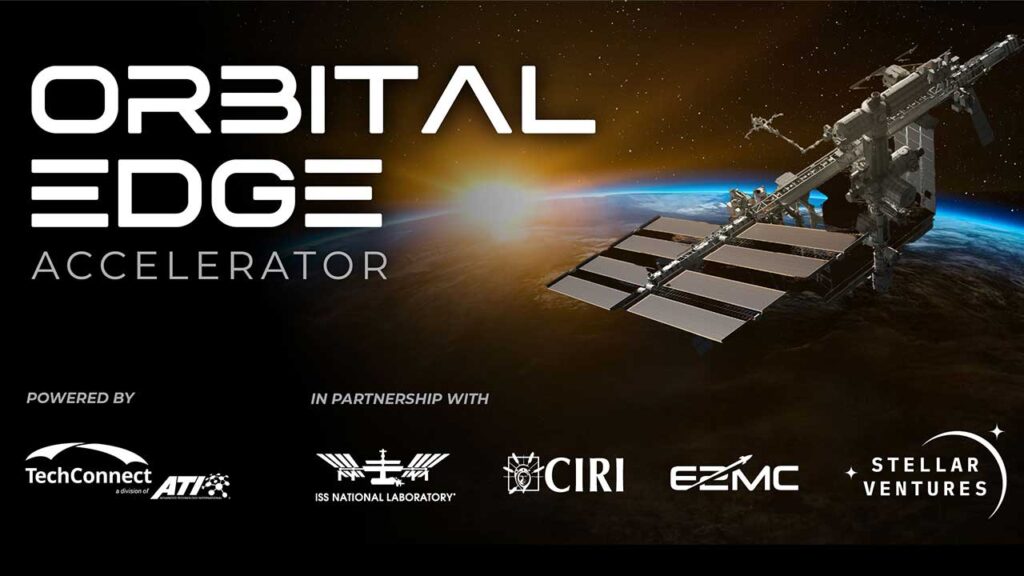
The application period for the Orbital Edge Accelerator solicitation closes May 19. Six startups will be selected to receive an investment of up to $500,000, mentorship, and the opportunity to launch an ISS National Lab-sponsored investigation. Learn more and apply.
Results
The most recent issue of Upward, official magazine of the ISS National Lab, is online. Explore valuable findings from space-based R&D—download the current and past issues here.
The University of Connecticut and Eascra Biotech are producing nanomaterials in space to treat diseases on Earth. The team’s injectable Janus base nanomaterials (JBNs) can regenerate lost cartilage in osteoarthritis patients and treat hard-to-penetrate solid tumors. The researchers leveraged microgravityThe condition of perceived weightlessness created when an object is in free fall, for example when an object is in orbital motion. Microgravity alters many observable phenomena within the physical and life sciences, allowing scientists to study things in ways not possible on Earth. The International Space Station provides access to a persistent microgravity environment. to improve the structure and uniformity of JBNs, which improves patient outcomes. Read more in the Upward feature “Microgravity Manufacturing.”
Orbit Fab and Astroscale U.S. are partnering on the first satellite refueling mission in GEO. The mission to refuel a Department of Defense satellite opens the door for future in-orbit refueling to extend the life of satellites. Last year, Orbit Fab became the first company to have an in-space refueling port qualified for flight. Learn more about Orbit Fab’s ISS National Lab-sponsored research to advance its technology for “Gas Stations in Space” in Upward.
Results from two ISS National Lab-sponsored projects were published in the top-tier journal PLOS One. One article discusses rodent research findings that shed light on human health in space and methods to prevent musculoskeletal disease progression. The other details stem cell research that could help identify astronaut health risks and develop preventative measures for their safety on future long-duration missions.
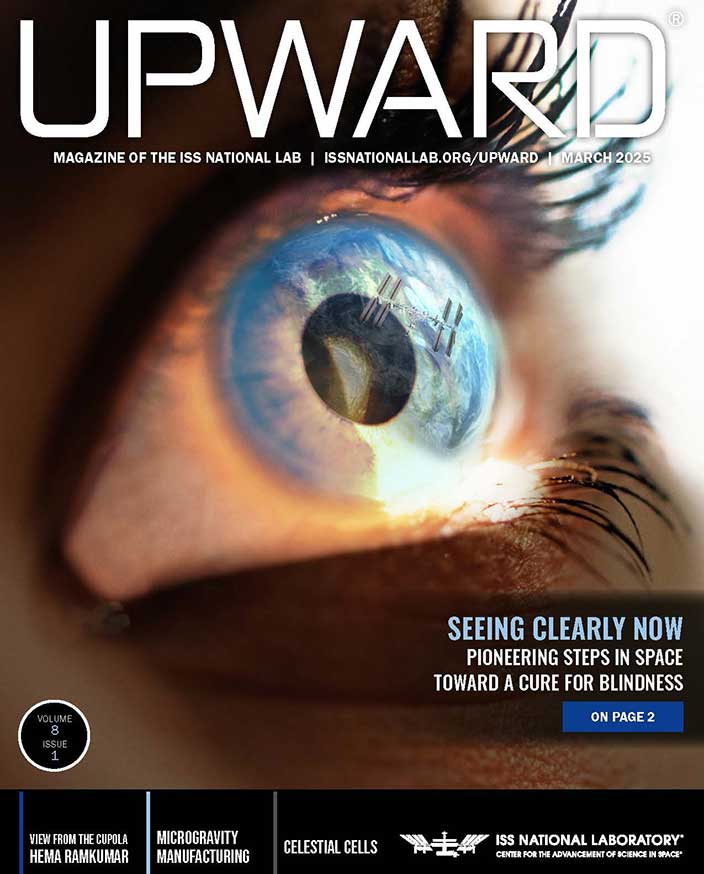
LEO Market Update
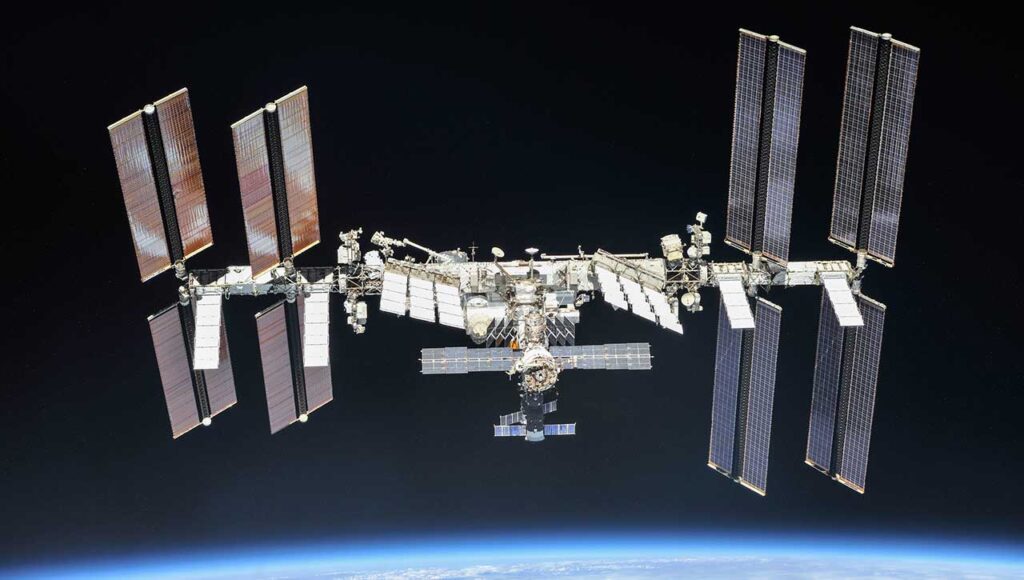
The ISS National Lab announced the launch of the Orbital Edge Accelerator program. The program is designed to integrate cutting-edge startups and investment partners into the rapidly expanding space economy. Learn more.
Two startups were awarded the Technology in Space PrizeA prize that provides grant funding for business startups participating in the MassChallenge startup accelerator program to conduct innovative research and technology development utilizing the ISS National Lab. The prize is funded by the Center for the Advancement of Science in Space, which manages the ISS National Lab, and Boeing. through the MassChallenge accelerator program. Startups RedPoint Oncology and Fourier will receive more than $650,000 in total funding to leverage the ISS National Lab to advance next-generation cancer therapeutics and novel radiation-shielding materials. Read more.
Register for ISSRDC
Registration is now open for the 2025 ISS Research and Development Conference in Seattle, July 28-31. Join us for the 14th annual ISSRDC(Abbreviation: ISSRDC) The only conference dedicated exclusively to showcasing how the International Space Station is advancing science and technology and enabling a robust and sustainable market in LEO. This annual conference brings together leaders from the commercial sector, U.S. government agencies, and academic communities to foster innovation and discovery onboard the space station. ISSRDC is hosted by the Center for the Advancement of Science in Space, manager of the ISS National Lab; NASA; and the American Astronautical Society., the only conference dedicated exclusively to showcasing how the ISS is advancing science and technology development. Register today.
Make a Stellar Impact With a Donation to the ISS National Lab
Want to make an impact and support science in space for the benefit of humanity? Click here to donate online, make a gift of crypto or stock, or contribute through your donor-advised fund.

